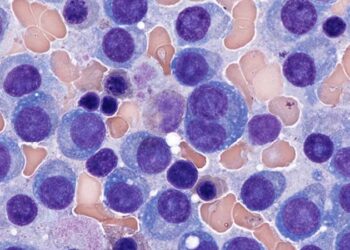In response to accumulating research linking alcohol consumption and increased risk for certain cancers, US Surgeon General Vivek Murthy called for the placement of warning labels on alcoholic products. Public health experts in Canada are also calling for this measure.
Canada published a final set of updated alcohol consumption guidelines in 2023 in a document entitled Canada’s Guidance on Alcohol and Health. According to that document, the use of alcohol causes nearly 7000 cases of cancer deaths each year in Canada, with most cases being breast or colon cancer, followed by cancers of the rectum, mouth and throat, liver, esophagus, and larynx.
Previous alcohol consumption guidelines from 2011 recommended that Canadians reduce long-term health risks by consuming no more than 10 drinks per week (for women) and no more than 15 drinks per week (for men). The updated guidelines, first released in August 2022 for public comment, represented a significant change in what is considered low-risk alcohol consumption, which is currently defined as consumption of no more than two drinks per week.
Conveying Cancer Risk
The updated alcohol consumption guidelines are much stronger at recognizing the association between alcohol and cancer risk, but many Canadians remain uninformed of this new guidance, Elizabeth Holmes, MPH, director of health policy for the Canadian Cancer Society, told Medscape Medical News. “Over 40% of Canadians are not aware that alcohol consumption increases the risk of cancer,” she said. “They don’t realize they’re drinking unsafe amounts.”
Individual provinces and territories could issue alcohol warning labels, but federal requirements would be the preference to ensure that all Canadians are exposed to these warnings about alcohol consumption, according to Holmes.
“We’re calling specifically for the federal government to implement mandatory warning labels because they will be available everywhere in Canada, so it won’t matter which province or territory you live in. You will see the warning labels,” she said.
Warnings Demonstrated Impact
Canadian evidence suggests that the placement of enhanced warning labels on alcohol containers modifies consumption patterns. A study conducted in Whitehorse, Yukon, examined a site where 300,000 cancer warning labels were applied to 98% of alcohol containers sold. Researchers compared this site with control sites in nearby locations where alcohol containers carried standard warning labels about drinking alcohol during pregnancy.
At all sites, the investigators compared alcohol consumption before the use of warning labels and at 14 months after the intervention.They found that per capita sales of labeled products fell by 6.59%, whereas sales of unlabeled products rose by 6.91%.
“Well-designed alcohol container labels can reduce per capita alcohol consumption,” said investigator Erin Hobin, PhD, a senior scientist at Public Health Ontario. “When you think about cigarette and cannabis packages in Canada, both of those substances aremandated to have health warnings right on their packaging. Canada is considered a world leader in designing strong health warnings on cigarette packages and, most recently, cannabis packages.”
Repeated Exposure
Compared with warning labels that appear on the alcohol products themselves, warnings about alcohol consumption that would appear in public spaces, such as bus shelters, may be helpful but would likely not have the same impact on educating consumers and curbing alcohol consumption, according to Hobin.
“Every consumer will virtually be exposed to the label every time they handle the product,” said Hobin. “Whether it is when they’re purchasing alcohol or they’re pouring alcohol or they’re consuming alcohol, they are repeatedly exposed to this important health message. Higher volume consumers would be exposed to it more often than lower volume consumers.”
Hobin is currently researching the hypothesis that repeated exposure to the message about alcohol consumption is “really important because it may provide consumers time and space to think about how they’re going to incorporate this message or this new health information into their decision-making process.”
Ireland will begin placing warning labels on alcohol in 2026, and the effect of those labels will be watched with a view to optimizing labeling to maximize its efficacy in modifying alcohol consumption, said Hobin.
“It will be critical to monitor the impact of new labeling policies, including in Ireland, not necessarily to prove or disprove the impact of the labels but to improve the effectiveness of the labels over time,” said Hobin. “Additional research can be conducted to better understand what is the optimal label design to grab consumer attention, encourage reading the label closely, and thinking about the health risks from alcohol. There are several outstanding questions. The more evidence we have, the more effective the label design can be.”
Onus on Producers
Product labeling is a matter of good manufacturing practices. Alcohol should carry labeling that explains what a standard drink is and what the dangers of overconsumption are, according to Jacob Shelley, co-director of the Health Ethics, Law, and Policy Lab at Western University in London, Ontario, Canada.
“People are not aware of what a standard drink is, and because alcohol is not consistent, the call for action should include standardizing what a drink is and making that information available on products as well,” said Shelley. “You not only have to warn about the dangers of using a product. You’re supposed to warn about the dangers of the foreseeable misuse. Overconsumption is a foreseeable misuse. That warning should be on the product.”
Holmes and Shelley reported having no relevant financial relationships. Hobin sits on various Canadian and international committees focused on alcohol guidance.
Source link : https://www.medscape.com/viewarticle/are-alcohol-warning-labels-coming-canada-2025a100015g?src=rss
Author :
Publish date : 2025-01-17 10:07:13
Copyright for syndicated content belongs to the linked Source.














